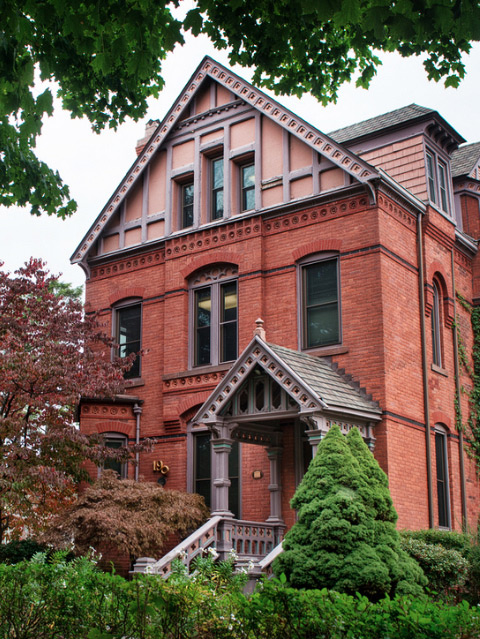
From speeding to distracted driving, car wrecks can occur from a host of actions and reactions and result in rear-end collisions, vehicle rollovers or head-on crashes. These collisions are complicated enough on a two-way road – let alone when they occur at an intersection.
Ask yourself; when you arrive at an intersection, are you consistently aware of your driving behavior and surroundings?
If you’ve recently been involved in a collision in Connecticut, contact The Flood Law Firm today by calling (860) 346-2695 for a no-cost, no-obligation consultation. We have decades of combined legal experience and can help you determine your best options.
Intersection Accidents
An intersection accident can happen in all forms. The most frequent examples include rear-end collisions, head-on collisions, T-bone crashes and wrecks involving pedestrians or cyclists.
Fatal Intersection Accidents
Vehicle collisions are common and happen every single day – unfortunately, we see them all the time. However, did you know that the Insurance Institute for Highway Safety (IIHS) states that in 2015 alone a total of 35,092 people died in various wrecks?
Of those deaths, how many do you think took place at an intersection? The numbers are grim.
Many intersection car accidents happen during left hand turns, but running red lights is the second highest cause of intersection car accidents.
In 2014, 709 people were killed with another estimated 126,000 injured from drivers who ran a red light, according to the IIHS.
More than half of the people who lost their lives were pedestrians, bicyclists or people in other vehicles – not the driver who was guilty of breaking the law.
How Common Are Intersection Accidents?
What’s more, 40 percent of all collisions involve an intersection. Understanding what causes them can make drivers more aware and possibly prevent a fatal crash.
According to the Federal Highway Administration (FHWA), approximately 2.5 million intersection accidents are reported annually.

Common Causes
Though a lot of factors can cause a car accident, like road conditions or driving under the influence of alcohol and/or drugs, intersection car accidents often stem from a few common circumstances, such as:
- Incomplete stops at red lights
- Inattentive drivers or pedestrians
- Signaling Improperly
- Failing to yield
- Merging
Driver Negligence
Negligence can refer to many poor driving habits, thought it often refers to speeding, drinking and driving or distracted driving, such as texting while driving. According to the National Highway Traffic Safety Administration (NHTSA), 96 percent of all intersection collisions are a direct result of driver error.
Always Be Aware
While it’s important to always be mindful and aware of your surroundings when behind the wheel, extra caution should be taken when you reach an intersection.
You simply cannot predict how other drivers, pedestrians, or bicyclists will react.
After An Intersection Traffic Accidents
Immediately following a wreck, assessing your health is a top priority. If you’re not injured, the next step is to call the police. Making an official report is crucial, as is exchanging insurance information with the drivers of the other vehicles involved. Finally, document the scene with photographs if you can. If a legal claim is made, images can help prove your case.
Above all, your immediate health and safety take precedence over all other actions following an intersection car accident.
Speak To an Experienced Accident Attorney
If you’ve recently been involved in a collision at an intersection, we at The Flood Law Firm offer our deepest sympathies. Though compensation won’t undo the inconvenience or pain and suffering you or your loved one have experienced, a monetary settlement could help tremendously with medical bills or missed wages. Contact our experienced team today by calling (860) 346-2695 and start moving forward with your life.
Common Intersection Accident Injuries
Injuries from intersection car accidents can range in severity, from mild bumps and bruises to more tragic results — fatalities. Those involved can experience all kinds of traumas, including:
- Traumatic Brain Injuries (TBI)
- Broken Bones (often the femur and pelvis)
- Lung Contusions
- Fractured Ribs
- Internal Organ Injuries
- Spinal Cord Trauma
- Facial Lacerations
These injuries are serious, some life-threatening, and need to be looked at by a professional doctor. Following a collision, seeking medical assistance is imperative.
Because it may take a day or two before you notice or feel a change or pain, consider getting a checkup even if just from your family doctor.
Who Is at Fault in Intersection Accidents
When an intersection accident occurs, more times than not the driver is to blame, usually by driving recklessly (i.e. speeding or not paying attention). Still, there are circumstances in which human error is not to blame.
For example, intersections that fail to give drivers unobstructed views of the road ahead, as well as oncoming traffic often create ideal circumstances for a crash. In this case, it is the highway department’s responsibility to address the issue.
However, proving that a roadway was hazardous and at fault for a wreck can be especially difficult. Evidence must be presented to prove that the exact area or road is dangerous, usually with proof of a history of collisions that have taken place there over time. For cases like this, seeking an attorney with experience can be beneficial to your claim.
The Flood Law Firm, Connecticut's Auto Accident Attorneys
Car accidents can be inconvenient, expensive, and even tragic, and you should not have to face the aftermath of such a difficult event alone. At The Flood Law Firm, we have decades of combined legal experience, will expertly assess your case, and help you determine the best way to move forward.
We will handle everything, from making phone calls to collecting medical records so that your only focus can stay on what matters the most - your healing.
Get your 100% confidential, no-cost, no-obligation case evaluation today by calling us at (860) 346-2695. Let us be your advocates.
